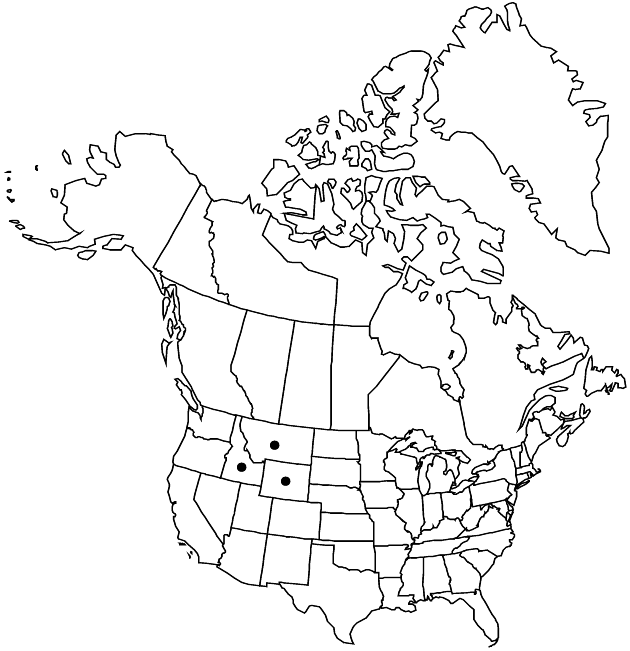Erigeron tweedyi
Bot. Gaz. 13: 17. 1888.
Perennials, 4–20 cm; taprooted, caudices multicipital crowns or branches relatively short and thick. Stems erect to ascending or decumbent-prostrate, densely strigose (hairs relatively thin), eglandular. Leaves basal (persistent) and cauline; basal (silvery) blades spatulate, broadly elliptic, 50–250 × 5–13 mm, cauline abruptly reduced distally, margins entire, faces densely strigoso-sericeous (hairs gray-white), eglandular. Heads 1–4. Involucres 4–6 × 9–14 mm. Phyllaries in 3–4 series, finely hirsuto-strigose, sparsely minutely glandular. Ray-florets 20–50; corollas blue to purple, sometimes white, 5–9 mm, laminae not coiling or reflexing. Disc corollas 3.1–4.3 mm. Cypselae 2–2.5 mm, 2-nerved, faces strigoso-sericeous; pappi: outer of setae, inner of 20–30 bristles.
Phenology: Flowering Jun–Aug.
Habitat: Clay hills, rocky slopes, limestone taluses, shale outcrops, sagebrush-grasslands
Elevation: (1300–)1600–3000 m
Distribution

Idaho, Mont., Wyo.
Discussion
Selected References
None.
Lower Taxa
"thick" is not a number.